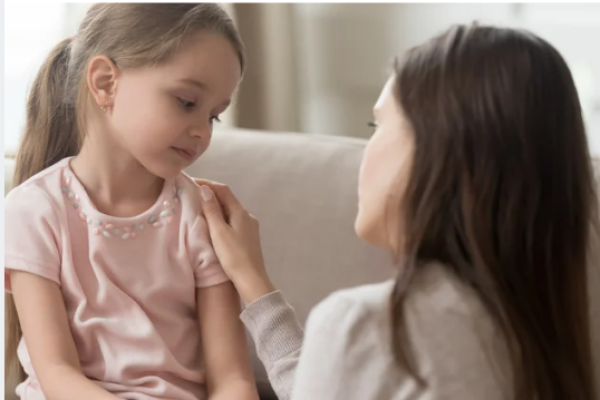Chronic pain in children is a condition that can be challenging and overwhelming for both the child and their family. While it’s not uncommon for kids to experience pain, whether from minor injuries or illnesses, chronic pain is different. Unlike acute pain, which is the body’s immediate response to injury or illness, chronic pain persists for months or even longer, often without a clear cause.
This guide provides an overview of chronic pain in children, its causes, how it differs from acute pain, and what parents can do to help their children manage it.
What is Chronic Pain?
Chronic pain is pain that lasts beyond the expected healing time of an injury or illness. In children, this means experiencing pain for three months or longer. It can affect various parts of the body, such as the head, limbs, abdomen, or back. The pain may be constant or come and go, and it often affects a child’s ability to engage in daily activities like school, play, and socializing.
Common types of chronic pain in children include:
– Chronic headaches or migraines
– Abdominal pain (such as irritable bowel syndrome)
– Musculoskeletal pain (often referred to as “growing pains”)
– Neuropathic pain (nerve-related pain)
– Complex Regional Pain Syndrome (CRPS)
How Chronic Pain Differs from Acute Pain
Acute pain is a short-term response to injury, surgery, or illness. It serves as a warning signal from the body to protect itself. For example, if a child sprains their ankle, the acute pain signals the need to rest the injured area, allowing it to heal. Once the injury heals, the pain goes away.
Chronic pain, on the other hand, continues even after the initial cause has resolved or can occur without any obvious injury. The nervous system becomes overactive and hypersensitive, meaning the brain may continue to perceive pain even when there’s no longer any physical reason for it. This is especially perplexing for parents because the pain can seem out of proportion to any visible symptoms.
Key differences between acute and chronic pain:
Duration: Acute pain is temporary; chronic pain lasts three months or more.
Purpose: Acute pain protects the body from further harm; chronic pain does not serve a protective function.
Impact on life: Chronic pain can affect sleep, mood, physical function, and participation in everyday activities.
Common Causes of Chronic Pain in Children
The exact cause of chronic pain can sometimes be difficult to identify, but a number of factors may contribute:
- Injuries: An injury may have long-lasting effects, even after the tissue has healed.
- Illnesses: Conditions like arthritis, fibromyalgia, or inflammatory bowel disease can lead to chronic pain.
- Neurological Issues: Malfunctions in how the nervous system processes pain signals can result in chronic pain.
- Emotional Factors: Stress, anxiety, and depression can exacerbate or even trigger chronic pain.
- Genetics: Some children may be more predisposed to developing chronic pain due to genetic factors.
The Emotional Toll of Chronic Pain
Children with chronic pain often face a range of emotional and psychological challenges. They may become frustrated or anxious because their pain isn’t improving despite medical interventions. Chronic pain can lead to missed school days, disrupted sleep, withdrawal from activities, and feelings of isolation. Over time, this can contribute to anxiety, depression, and behavioral changes.
As a parent, it’s important to be attuned to these emotional signals and address them alongside the physical pain. Helping your child manage the emotional aspect of chronic pain can improve their overall quality of life and reduce the impact pain has on their daily activities.
How to Help Your Child Manage Chronic Pain
- Seek Multidisciplinary Care: Chronic pain is best managed using a multidisciplinary approach. This may involve doctors, physical therapists, psychologists, and occupational therapists working together to create a comprehensive treatment plan tailored to your child’s needs.
- Cognitive-Behavioral Therapy (CBT): CBT is often recommended for children with chronic pain. It teaches children how to manage their pain by changing their thoughts and behaviors. This form of therapy has been shown to reduce pain intensity and improve coping mechanisms.
- Encourage Physical Activity: Although it may seem counterintuitive, staying physically active can help reduce chronic pain. Physical therapists can provide guidance on appropriate exercises that won’t worsen the pain but will improve strength and mobility.
- Promote Relaxation Techniques: Teaching your child mindfulness, deep breathing exercises, or progressive muscle relaxation can help them manage their pain and reduce stress.
- Support Emotional Wellbeing: Chronic pain is often linked to psychological distress, so supporting your child emotionally is key. Encourage open communication about their feelings, and consider counseling or support groups for additional help.
- Advocate for School Accommodations: Work with your child’s school to ensure they have the necessary accommodations, whether it’s more flexible deadlines, reduced physical activities, or special seating arrangements.
The Role of Parents
As a parent, your role is crucial in helping your child navigate chronic pain. Offer empathy, understanding, and validation of their experience. Children often worry that they’re not being believed because chronic pain can be “invisible.” Reassure them that their pain is real and that you’re there to support them every step of the way.
Lastly, don’t hesitate to seek second opinions or explore various treatment options if your child’s pain persists. With the right support, it is possible for children with chronic pain to lead fulfilling, active lives.
Chronic pain in children can be difficult to understand, but with the right approach, it can be managed. By recognizing the difference between acute and chronic pain, identifying potential causes, and seeking appropriate care, parents can play a pivotal role in helping their child cope and thrive despite the challenges of living with chronic pain


